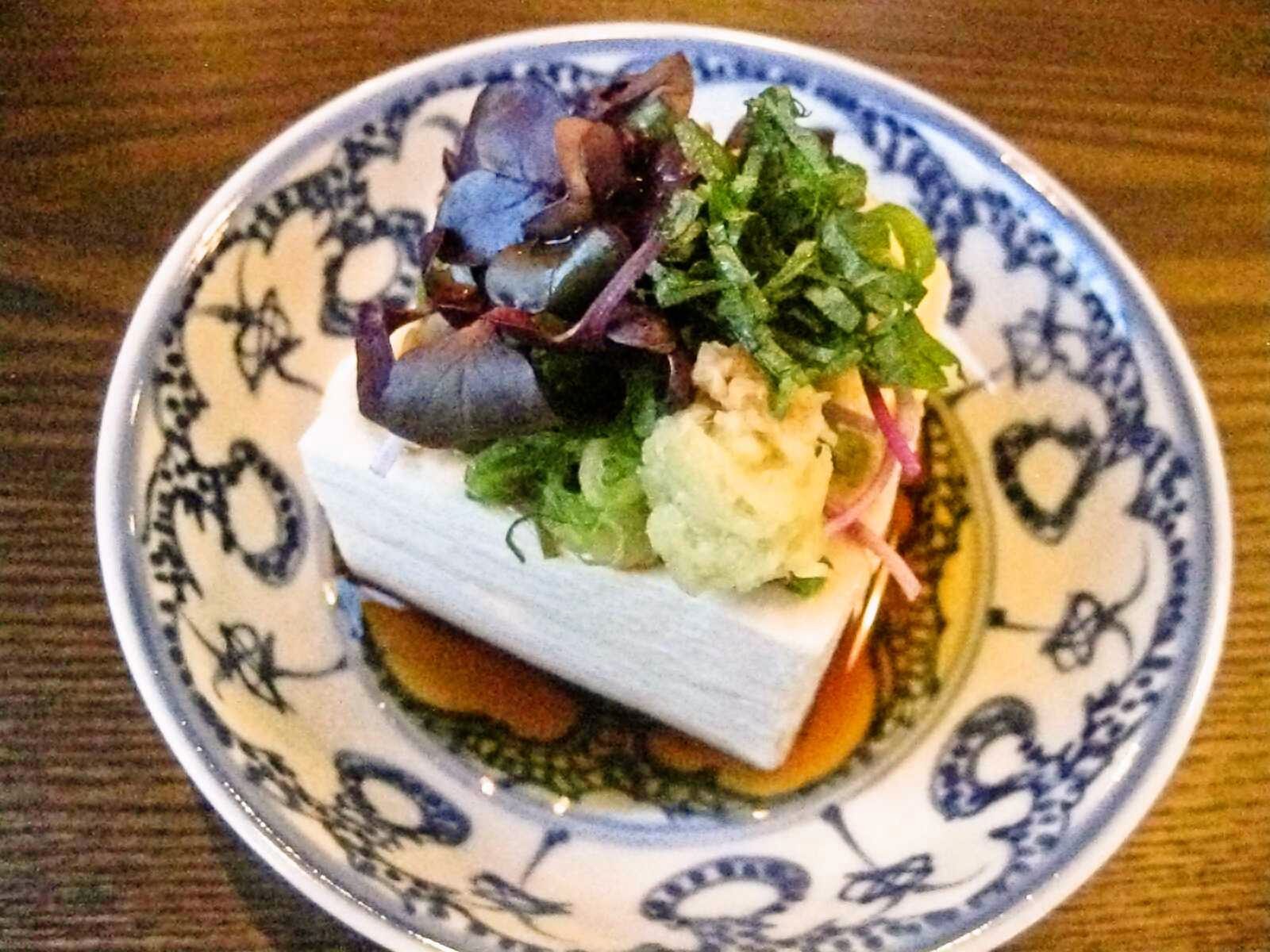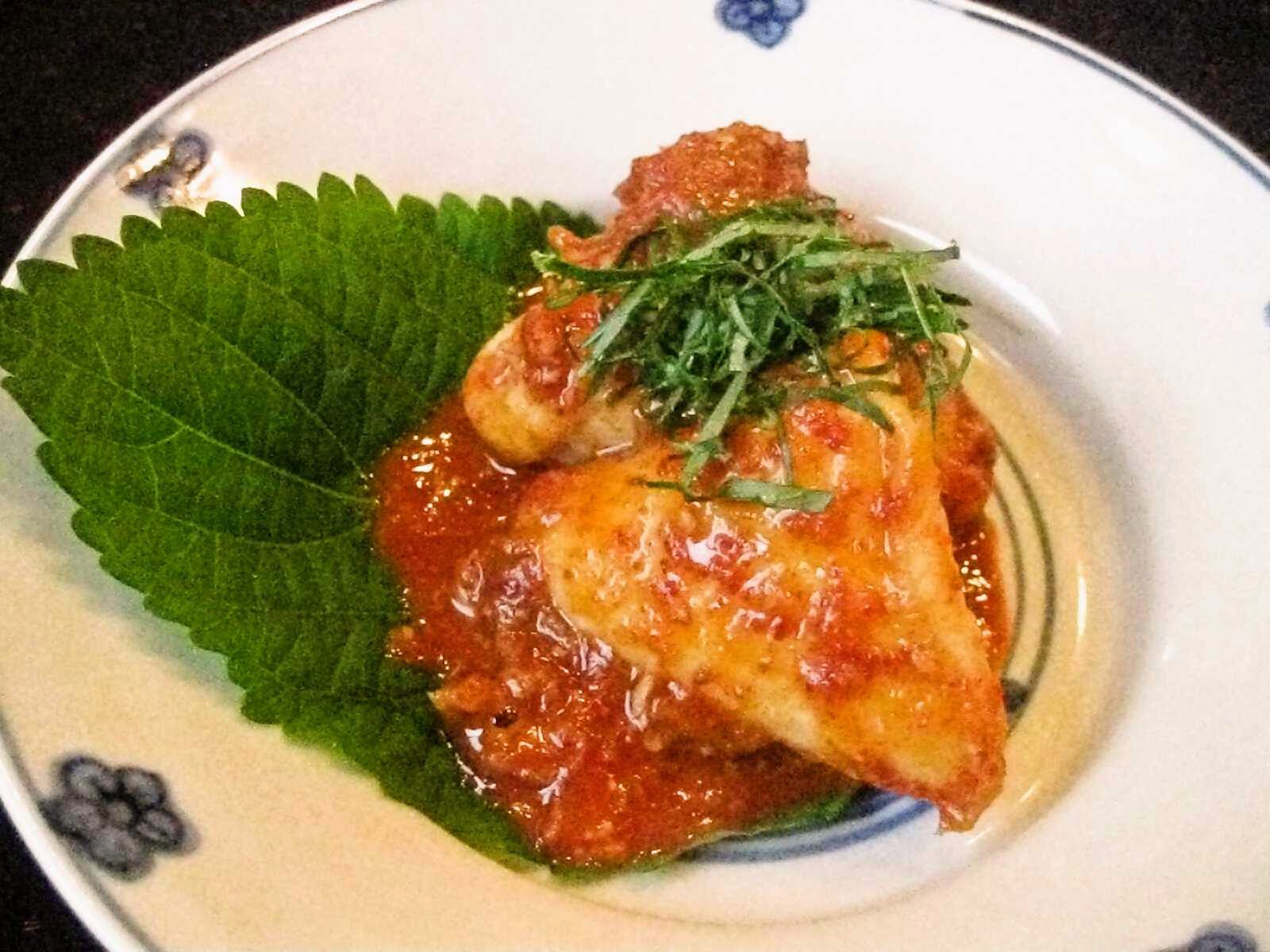This simple tofu dish is a favorite of my father. For him, thinly sliced green onion and grated ginger are essential as condiments or toppings, and whatever is available in the garden -- including shiso perilla leaves and myoga Japanese ginger buds -- are sliced up and added in summer.
1/2 of recipe:
89 calories; 8.2 g protein; 4.9 g fat; 2.7 g carbohydrate; 1.9 g net carbs; 94 mg sodium (with 50% reduced-sodium soy sauce; 173 mg with regular soy sauce); 0 mg cholesterol; 0.8 g fiber
1/2 of recipe:
89 calories; 8.2 g protein; 4.9 g fat; 2.7 g carbohydrate; 1.9 g net carbs; 94 mg sodium (with 50% reduced-sodium soy sauce; 173 mg with regular soy sauce); 0 mg cholesterol; 0.8 g fiber






